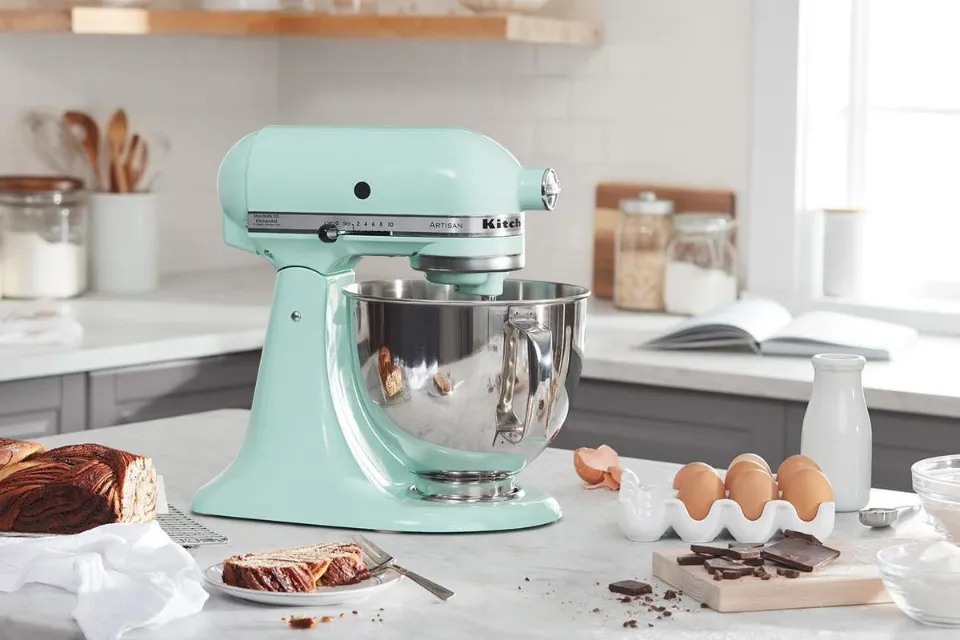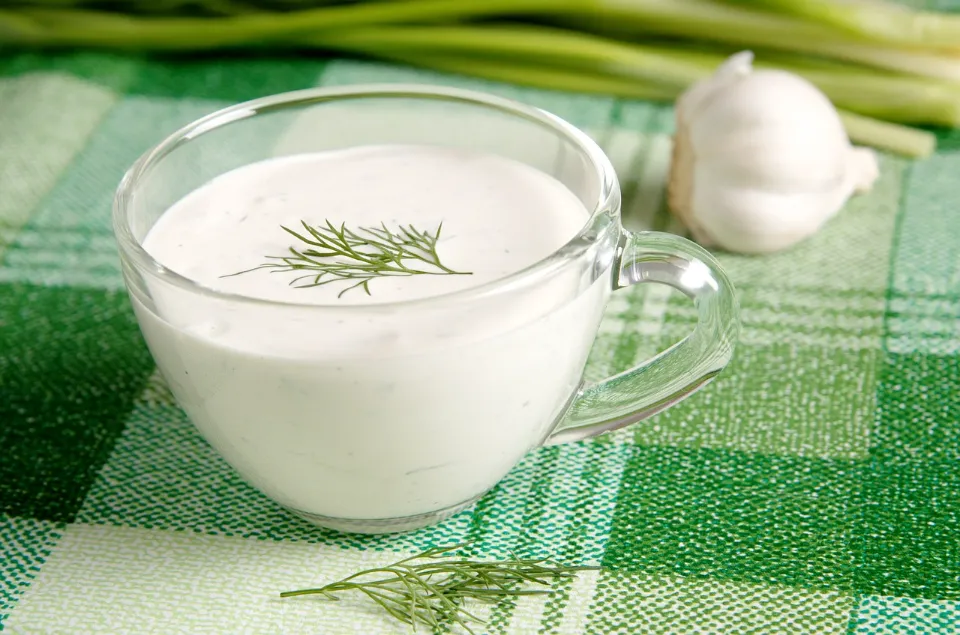Are KitchenAid mixers worth it? Yes, in a nutshell. Due to their sturdy metal components, KitchenAid mixers can last for decades. Because they can do so much more than just mix, KitchenAid mixers are well worth the investment.
KitchenAid mixers are worth it because they do so much more than mix; they shred, grind, whip, knead, and mash. You can use them to make pasta, mix ice cream, stuff sausages, juice fruits and vegetables, and much more thanks to the abundance of attachments that are available.
However, there are additional advantages to KitchenAid mixers besides versatility, which I examine in this in-depth review. In order for you to get the full picture, I also reveal some of the drawbacks (outside of the high cost).
So, if you’re considering purchasing a KitchenAid mixer but need an objective review to guide you, keep reading.
Read More: Food Processor vs. Mixer – Which One Should You Choose?
How Much Do KitchenAid Mixers Cost?
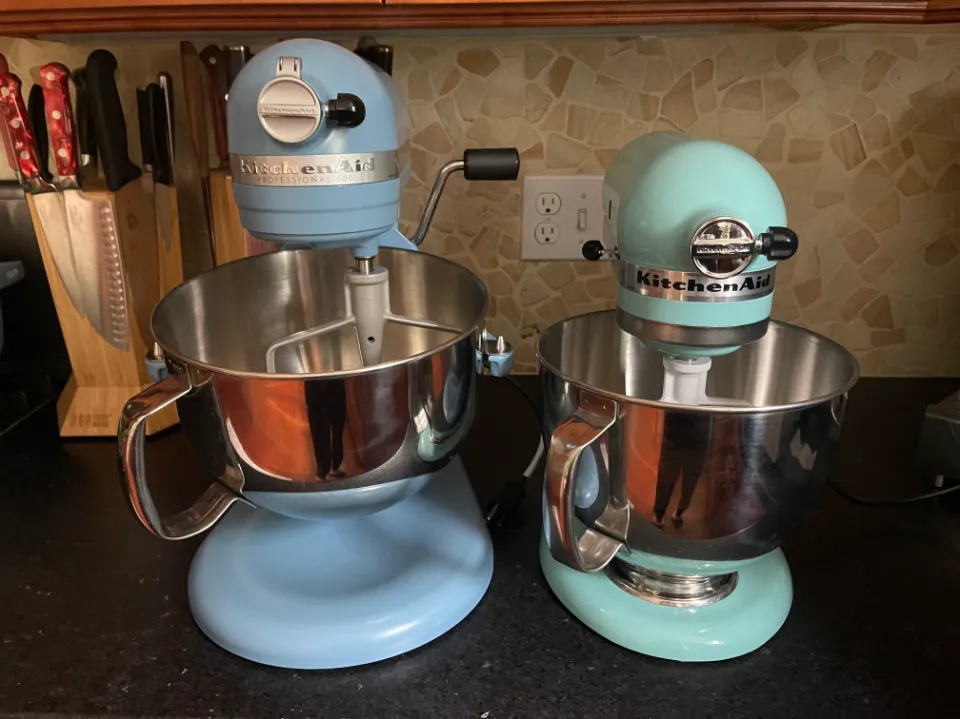
There aren’t many alternatives that can match KitchenAid mixers’ power, performance, and versatility.
However, there is a cost associated with those advantages.
Despite the fact that prices vary depending on the size, bowl, and attachments, KitchenAid is more expensive than the majority of substitutes. And, if you prefer a bowl-lift vs. a tilt-head model, you can expect to pay even more.
Why Are KitchenAid Mixers So Expensive?
In this section, I explain why KitchenAid mixers are so expensive and lay out what you can expect if you purchase one of these highly-coveted countertop appliances.
Quality Construction
Stand mixers made by KitchenAid can be handed down through families for many years.
The excellent design, premium components, and dedication to craftsmanship produce stand mixers that last for a very long time.
To be clear, no company is perfect, but KitchenAid has been in business for more than a century, and durability is often a sign of high-quality goods.
In addition, KitchenAid provides a hassle-free 1-year replacement warranty to ensure that you are happy with your purchase.
This warranty extends to purchases made in the United States, District of Columbia, Puerto Rico, and Canada.
American-Made
In Greenville, Ohio, skilled craftsmen produce KitchenAid stand mixers.
It’s comforting to know that the recognizable appliance is still produced in the USA, especially in light of the fact that many other companies have chosen to outsource their entire manufacturing processes to China in order to benefit from lower labor and construction costs.
Fair enough, some stand mixer components are produced abroad (the stainless steel bowls, for instance, are produced in Korea), but the stand mixer itself is assembled in the United States.
Versatility
Unlike other mixers, a KitchenAid stand mixer does much more. It has a supporting cast of add-ons that make it a multi-purpose appliance. With a KitchenAid stand mixer and multiple attachments, you can eliminate these additional appliances:
- Spiralizer
- Grinder
- Grain Mill
- Ice cream maker
- Food processor
- Juicer
- Strainer
- Sausage Maker
- Pasta Press
From making cupcake batter to producing homemade noodles, it’s a product that can free up counter space and still serve your food prep needs.
Remember that since most attachments are sold separately, depending on your needs, the overall cost may rise quickly.
Brand Reputation
Over a century of history can be found with KitchenAid. Millions of devoted consumers have grown to love the brand over time, and its stand mixer has become a kitchen staple.
Take a look at the tens of thousands of raving customer reviews for the KitchenAid Artisan 5-Quart Tilt-Head Stand Mixer, which is constantly in demand.
A strong brand reputation is the result of its extensive track record and demonstrated value. You can be sure you’re getting a durable product when you purchase a KitchenAid mixer. However, its dependability, heritage, and reputation come at a cost.
History of the KitchenAid Mixer
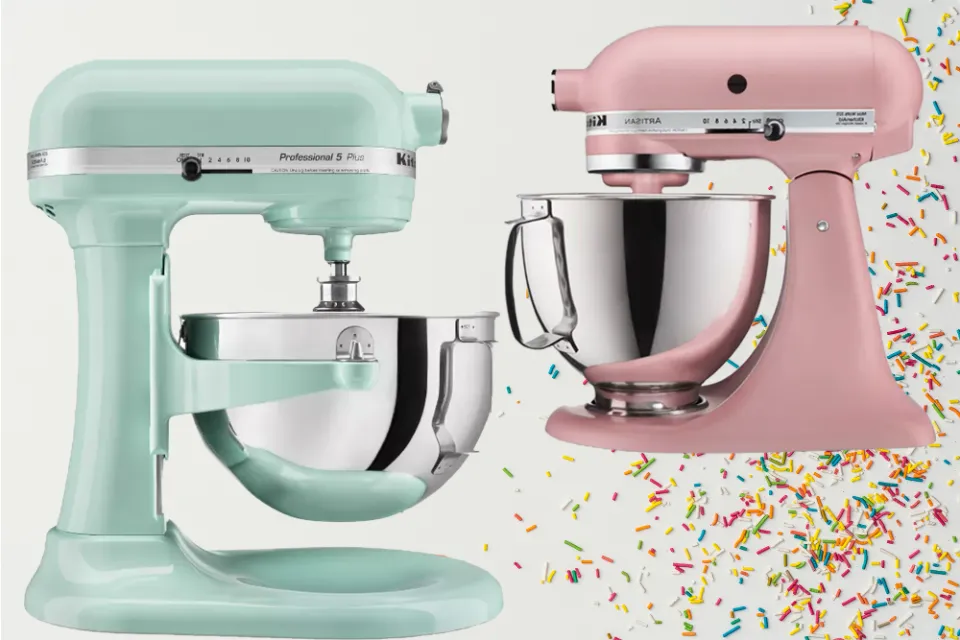
You might not be aware that the original KitchenAid mixer was designed with industry in mind.
In 1908, Herbert Johnston and Thomas F. developed the first prototypes. Rataiczak working for Hobart Manufacturing. They were in use on all U.S. Navy ships by 1917.
The upright-styled Model H-5 was launched in 1919 for home use. When one of the company’s executives took the prototype home to try it out, his wife called it the “best kitchen aid.” The name stuck.
The Model K emerged from the original plan by 1937. Egmont Arens is credited with coming up with the interlocking bowl and cylindrical J-style mixing arm used in this design. Later, this style was trademarked and is still in use today.
For many years, KitchenAid has been a sought-after household essential. It comes in a variety of colors, sizes, and designs to suit different tastes. For companies that handle large volumes of food preparation, the brand also manufactures commercial stand mixers.
How They’re Made
Urban Greenville, Ohio, is where KitchenAid mixers are produced.
Even though factory tours are no longer offered, the KitchenAid manufacturing facility is still operating as usual today, just as it has since 1941.
Before moving any parts to the primary assembly locations, the KitchenAid factory team prepares them all. Preparation includes cutting, pre-assembly, drilling, and pressing ball bearings.
A fine, colorful powder is sprayed onto mixer parts as they are suspended on conveyor lines, and the powder is then baked into the surface. This baking process results in the powder becoming part of the mixer itself, so it’s not a coating that can easily chip or scratch.
The components are then transported by cart to various locations throughout the factory where they will be manually assembled.
Before moving on to the installation of the trim band and flat beater, every detail is carefully examined. Mixing speeds are set, and all components are inspected to ensure proper movement and spacing.
Quality control team members ensure colors are vibrant and without blemish before being packaged for distribution.
What Can a KitchenAid Mixer Do?
Like all mixer brands, KitchenAid mixers have three main functions: whisk, mix and knead batters and doughs. With their large mixing bowl capacities, mixers make it simple to prepare items in large quantities because they eliminate the tedious work of having to manually knead a mixture, whisk egg whites, or mix a cake batter.
Not functionality, but rather aesthetics, distinguishes a KitchenAid mixer. Any serious baker can recognize a KitchenAid mixer from a mile away thanks to their distinctive design, and there are many ways to customize your mixer, including having a message or name engraved on some models.
You can also buy an extra mixing bowl in a different design and add additional attachments (like a pasta maker or food grinder) to increase the mixer’s functionality and versatility, and there are other KitchenAid appliances like toasters, kettles and food processors that you can buy to complement your mixer and match the look.
KitchenAid Attachments
All KitchenAid mixers have an outlet at the front of the unit for attaching KitchenAid accessories that can be bought separately.
You won’t need to purchase each specialized appliance separately if you add these optional extras to your mixer, increasing its versatility.
All KitchenAid stand mixers can use the universal attachments.
Along with various mixing tools, pouring shields and mixing bowls that can be bought separately, you can buy the following attachments for KitchenAid mixers:
- 3-piece Pasta Roller and Cutter KSMPRA ($299)
- Metal Food Grinder 5KSMMGA ($219)
- Fresh Prep Slicer & Shredder 5KSMVSA ($169)
- Sifter + Scale KSMSFTAA ($259)
- Pasta Roller KSMPSA ($149)
- Citrus Juicer with Strainer JE ($59)
- Gourmet Pasta Press KSMPEXTA ($399)
- 7 Blade Spiraliser Plus with Peel, Core & Slice KSM2APC ($229)
- Sausage Stuffer Attachment Kit without Food Grinder SSAA ($19)
- Food Grinder 5KSMFGAA ($119)
- Food Processor KSM2FPA ($399)
- Grain Mill KGM ($229)
- Pasta Cutter and Angel KSMPCA ($199)
- Ice Shaver 5KSMSIA ($169)
- Vegetable Sheet Cutter KSMSCA ($229)
Remember that many of these accessories will significantly increase the price of an already expensive mixer, and you’ll also need to make sure you have enough storage space to house the extra accessories.
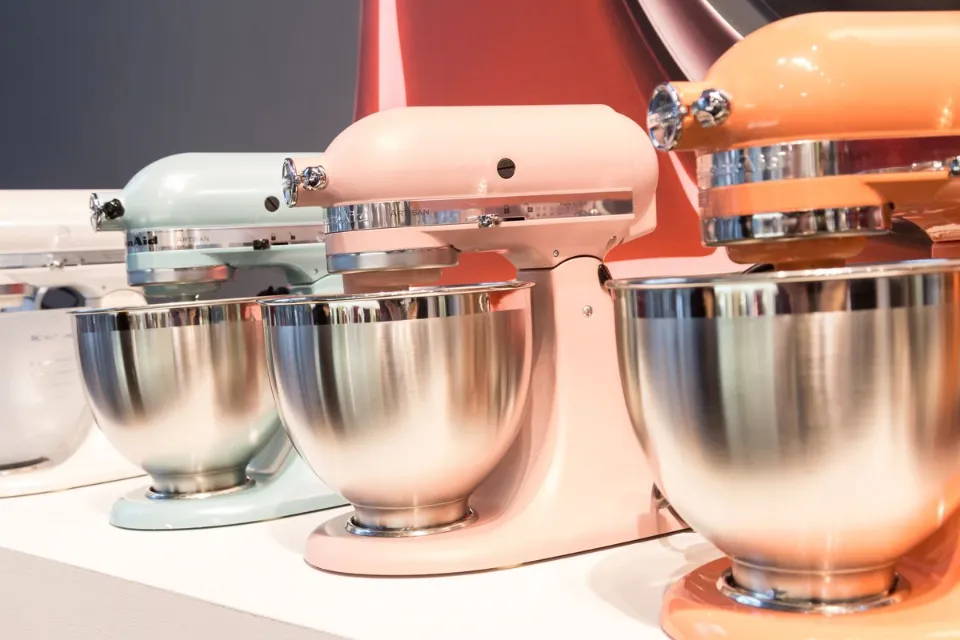
What Other Stand Mixers Should You Consider?
Depending on the model, KitchenAid mixer weight varies. The Artisan Mini, which weighs 18 pounds, is the lightest, and the Professional 6500 Design, which weighs 37 pounds, is the heaviest. The remainder fall into this range.
KitchenAid mixers weigh between 20 and 30lbs depending on the model. They occupy about a foot of counter space and are between 13 and 15 inches high. Therefore, it is better to leave your KitchenAid mixer in one location rather than bringing it in and out for each use.
The KitchenAid Artisan is an expensive item. We advise taking a look at the KitchenAid Classic Plus if you want to make a small financial saving on a high-quality KitchenAid model.
Conclusion: Should You Buy the KitchenAid Artisan Stand Mixer?
For you to be aware of what you’re getting before you open the box, we put the Artisan through a battery of tests as part of our evaluation of the best stand mixers. This machine excels at mixing, kneading, and, especially, features that make it simple to use, like one-handed operation. Moreover, this elegant machine is available in many color options and has tons of helpful aftermarket accessories that add to its versatility. You can’t go wrong with this machine if you want a stand mixer that is affordable and capable of handling almost any task a home cook can throw at it.

